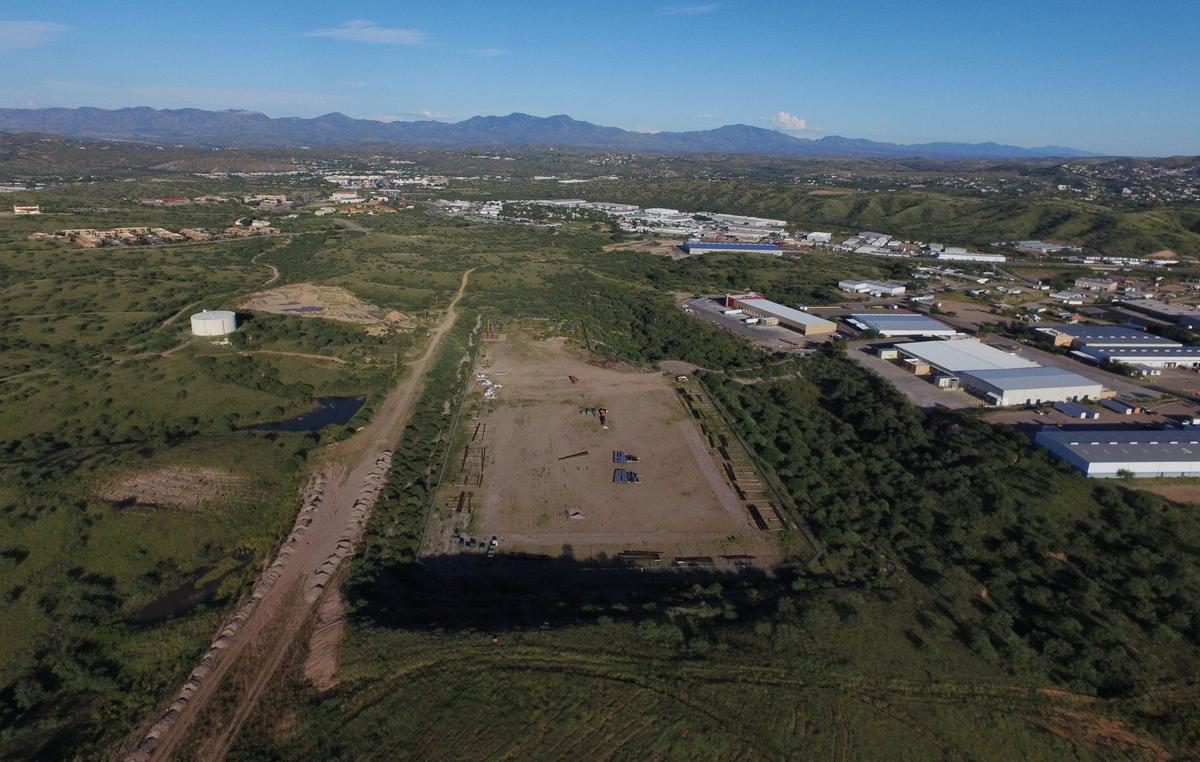Tucson-based UniSource Energy Services and a Texas energy company are seeking approval of a project to upgrade an existing high-voltage transmission line between a substation near Vail and Nogales and to build a new power line from Nogales to Mexico.
UniSource is sponsoring the project through its UNS Electric subsidiary, which serves Santa Cruz and Mohave counties, along with Dallas-based Hunt Power.
The companies have filed for approval of the project with the Arizona Corporation Commission and the Arizona Power Plant and Transmission Line Siting Committee, which plans public-comment meetings on the project in early September in Nogales and Tucson.
UNS spokesman Joe Barrios said its primary part of the project, known as the Nogales Tap to Kantor Upgrade Project, will boost reliability for the utility’s Santa Cruz customers.
The Nogales area now gets its power from a single high-voltage line extending about 55 miles from the Vail substation, south of Interstate 10 and west of South Rita Road.
“Right now, Nogales is at the end of the line, literally,” Barrios said.
Under the proposed project, UNS would upgrade a 27.5-mile segment of the power line — essentially its northern half — to increase its capacity and link with the new line to Mexico for emergency backup.
Hunt Power is proposing to build and operate the Nogales-Mexico segment of the project, known as the Nogales Interconnect, with plans to sell power into Mexico.
But that roughly five-mile line, including a proposed new substation west of Nogales, also would allow UNS to temporarily tap power from Mexico.
“By having this connection, if there were an incident and were were unable to deliver power to them along that line, being connected to Mexico’s grid would give us another option to get power to them, at least temporarily,” Barrios said.
The UNS line is still in the planning process, but current cost estimates range from about $30 million to $40 million, Barrios said.
Barrios said UNS will seek to recover the cost of its part of the Nogales Tap to Kantor Upgrade Project through rates, as it would for any grid-improvement project.
The utility was considering increasing the capacity on the northern half of the Vail-Nogales line anyway after upgrading the southern half of the line in a project completed in 2014, he said.
UNS also will gain some revenue from transmission fees, and any costs linked to selling wholesale power will not be borne by ratepayers, Barrios added.
Hunt Power says the Nogales Interconnection will provide a direct-current “asynchronous interconnection” — also known as a “DC tie,” near Nogales to enable two-way electricity transfers between the regional grid of which UNS is a part, the Western Electricity Coordinating Council, and Mexico.
Hunt says the DC tie is needed because the Arizona and Sonoran power grids cannot be connected directly through synchronous connections — like those within regional grids such as the WECC — because the two nation’s grid frequencies are not “in phase,” or compatible.
Hunt says the interconnection will provide greater stability and reliability to both the Arizona and Sonora grids by allowing one to be a backup source of power to the other in times of peak demand, and it also could provide “black-start” power needed to bring other emergency resources online.
But the DC tie will keep the two grids completely separate, effectively acting as a “firewall,” the company said.
Hunt estimates the Nogales Interconnection will cost about $80 million, including the new substation.
The company has proposed two routes for the project, based as much as possible on existing utility easements, and the company is negotiating with landowners for easements on private land, Hunt spokesman Paul Schulze said.
Hunt also has applied to the U.S. Department of Energy for a presidential permit required for cross-border power sales.
The project partners hosted public “open house meetings” on the project in June in Sahuarita and Nogales.
In late July, the Energy Department published a draft environmental assessment for public comment on proposed routes.
Hunt Power also is the main backer of the $800 million Southline Transmission Project, which includes a proposed new, 240-mile high-voltage line connecting southern New Mexico and Southern Arizona, and upgrades to 120 miles of power lines from a substation south of Willcox to a substation north of Tucson.
That project was approved by the Arizona Corporation Commission in February and is under consideration by the the New Mexico Public Regulation Commission. Southline is expected to begin construction next year and be phased into service by 2020.
Hunt Power is part of a larger, privately owned group of companies managed by the Ray L. Hunt family and engaged in oil and gas exploration, refining, power, real estate, ranching, and private equity investments.





